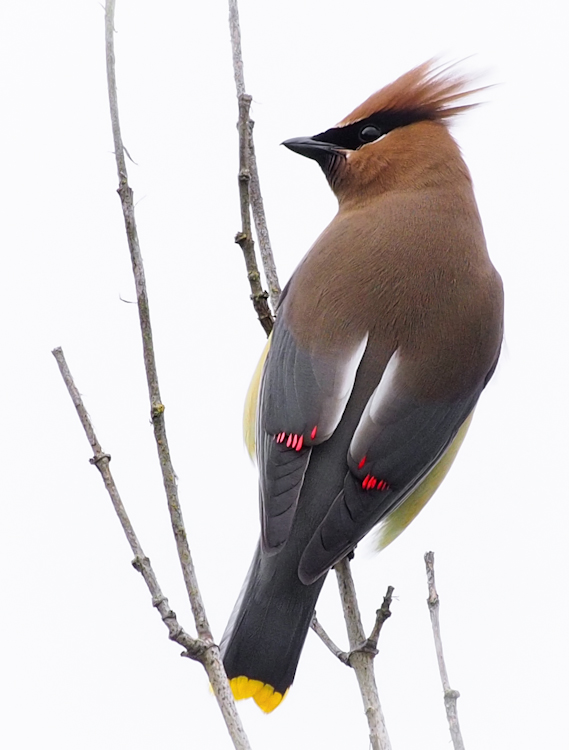I marked my winters in California by the return of the Cedar Waxwings. A few years ago this is how I would describe my seasonal transition:
It starts with a whistle, but a whistle so faint it’s a whisper across the leaves. And then the sound of raindrops, but it’s not rain. It’s the patter of falling berries, pyracantha and holly, dropping into the blanket of debris below the trees. Finally, we see the face — peeking through the branches with an ebony mask drawn across the eyes like an avian Zorro. This is my winter. It doesn’t begin until the waxwings come home.
It still doesn’t feel like home without the flock of winter waxwings in our back garden … hundreds of them flitting quiet as leaves among berry bunches or singing out in a pitch as high as a dog whistle.
When we left California and our wildlife hospital, a few co-workers expressed envy that wildlife workers in the Northwest actually get to see baby waxwings. In the Bay Area, Cedar Waxwings generally arrive when juveniles are flying and they leave before nesting begins. In California, they enjoy their southern respite, gorging on winter berries and decorating barren trees like Christmas ornaments.
Seattle Audubon’s Washington range map shows waxwings around Puget Sound year round. I’ve seen the occasional waxwing hair tuft sticking out of shrubbery, but not yet the swarm of synchronized, silent flyers that characterized our Oakland home.
I photographed this solitary Cedar Waxwing against a blank canvas of a Seattle sky. I saw no others but the canopy is thicker here, and I suspect that flock members were nearby, speaking their truths in a pitch my simple ear can’t detect.

:: Astacene (3,3′,4,4′-tetra-keto-beta-carotene is the oxidation product of astaxanthin which creates the red, waxy and pigmented spots that give waxwings their name.

That is such a gorgeous photo of the waxwing. Thanks for the reminder that it’s time to go looking for them here in San Francisco.
Thanks, John. Where there are berries … 🙂
I like the colour treatment and the diagonal placement of the waxwing against the twigs. I ordered Lightroom a couple of months ago but continue using PS for my workflow. Lightroom has very effective noise reduction engines, and I’ve tried them, but I still keep on using PS exclusively.
We live in suburban LA and host a growing flock of Cedars to our towering California Sycamore, Lilly Pilly, Pepper and Colter pines every January. This winter was the coldest in 30 years and a nesting pair are staying rather than venturing north!
Hi, Greg, sorry for the late reply. Thanks so much for your comment. How amazing about your nesting pair! I’ve seen some waxwings at the LA botanical garden, but I’ve never seen a Cedar Waxwing nestling or fledgling. I hope they have a successful brood in your garden, and you get see some baby waxwings fledge.